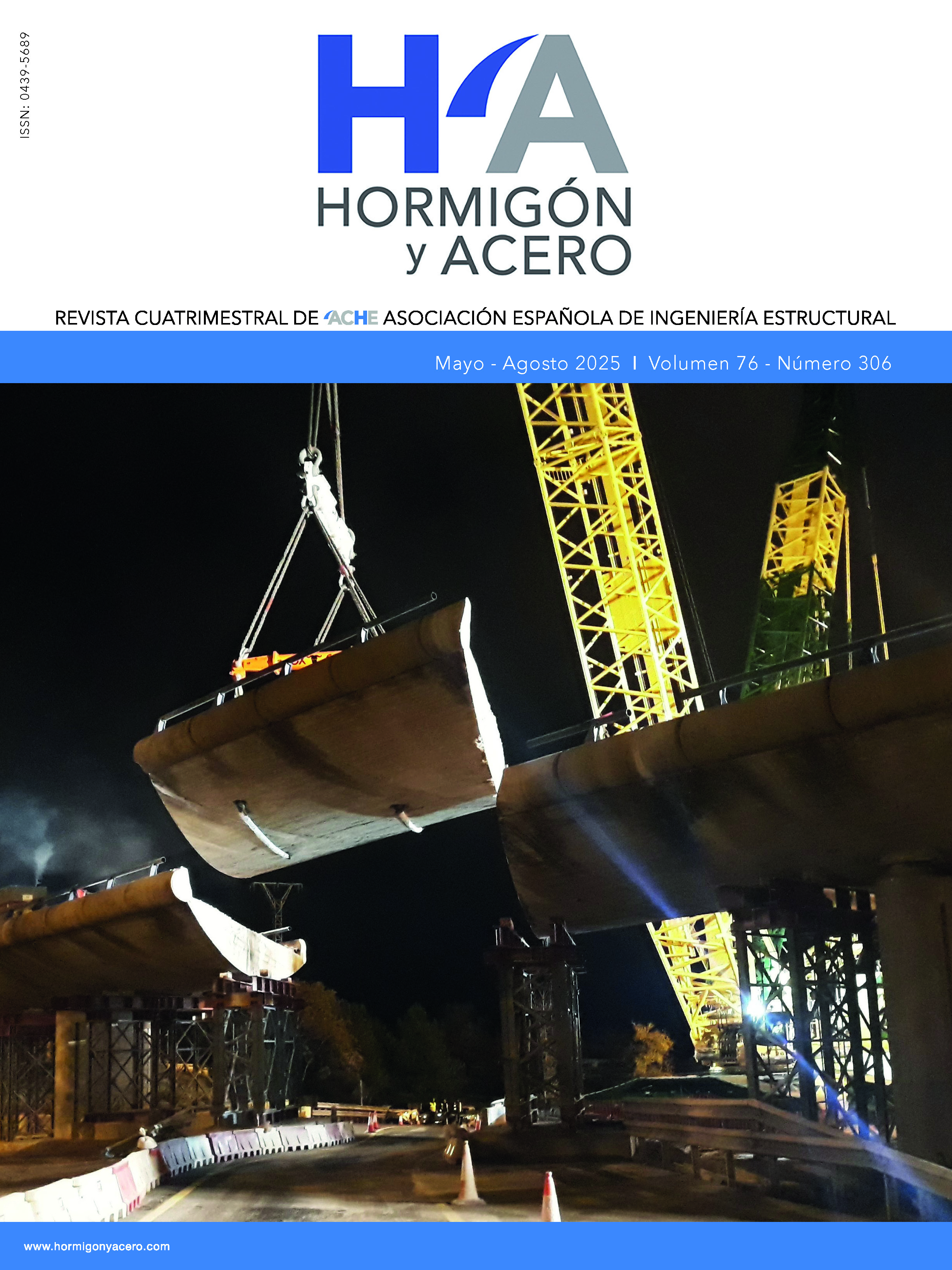Pilares cortos de hormigón armado diseñados según los reglamentos fib Model Code 2020, Eurocode 2:2023, ABNT NBR 6118:2014 y ABNT NBR 6118:2023: Estudio de la sostenibilidad
Resumen
Este trabajo tiene como objetivo presentar un estudio de la sustentabilidad, enfocado en el diseño de columnas cortas de hormigón armado respetando las premisas de tres reglamentos técnicos: fib Model Code 2020, Eurocode 2:2023 y ABNT NBR 6118:2023. Para el diseño de este tramo de columna, en este estudio se consideraron dos cuantías de armaduras, una mínima (³ 0,4%) y una máxima para empalmes por traslape (< 4,0%); dos clases diferentes de resistencia del hormigón, C20 y C50; y, con fck referido a tres edades diferentes de 28, 56 y 91 días. Este escenario proporcionó 16 posibilidades diferentes para detallar este tramo de columna. También se consideró el hormigón mezclado con dos clases diferentes de cemento; CR con alto contenido de clínker (> 90%) y CS con alrededor de 30% de clínker. El análisis comparativo abordó el tema de la sustentabilidad considerando únicamente las emisiones de CO2eq y la desmaterialización. En las condiciones de este estudio, se concluye que utilizando los criterios del Eurocode 2 (EN 1992-1-1), los hormigones producidos con cementos clase CS y edades de control del fck de 56 días, siempre conducen a una mayor desmaterialización y menores emisiones de gases de efecto invernadero. Este estudio también demuestra que las decisiones de diseño, combinadas inteligentemente con la tecnología del hormigón, pueden influir significativamente en la sustentabilidad de una estructura.

